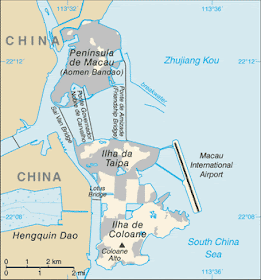 |
| Harriett Low, 1833 by George Chinnery Courtesy, Peabody Essex Museum www.PEM.org |
“Such sleeves I never beheld – complete frights”
opined the youthfully outspoken 20-year old Harriett Low (1809-1877). It was
not a particularly unique statement from a young woman who was a keen observer
of the fashions from antebellum America. What makes Low’s discomfort
particularly interesting was the context in which she evaluated the costuming
she confronted. Raised in Salem,
Massachusetts, in 1830 she was a resident of Macao, China, and her words remarking
upon "the latest Calcutta fashions” recently brought to her in Macao, China
were carried in a
letter, written 18 August 1830 to her sister, back home in Salem.
While
men focused on cultivating strong business associations through honest business
transactions, genteel and polite public interaction and hard work aboard ship
and in the Canton factories, the very social environment of Macao, inhabited
primarily by women and families, was quite different. Daily visits, dinners, teas, balls, concerts and operas
entertained the residents of Macao. So too did the routine of walks and riding
characterize their days.
Clothing
was an important connection to her American home and Harriett repeatedly notes
her active dressmaking and millinery projects while in China, with more than an
occasional nod to Yankee thrift. On Monday 28 March 1831 (210), she notes:
"Pulled out old dresses to day and find the
great sleeves worn last summer will have to be cut out. Oh dear what a job.
What slaves to fashion women are."
Her primary responsibility for her large family back in Salem was as seamstress; she continues to connect with her family during her time in China via her hand work: “Evening mended silk stockings, delightful employment” [Saturday 5 December 1829]; “At home cutting a white dress, so you see we have employment all the time” [Thursday December 10, 1829]; “Commenced making a bonnet [Weds. 16 December 1829]. She also notes remaking gloves and having to rip out the stitches, updating bonnets and making clothing for others. These entries ensured that her family knew she was engaged in worthwhile, productive activities, although, in fact, as the reader will discover, she was enjoying a much busier social life then she had known previously at home in Salem.
Her primary responsibility for her large family back in Salem was as seamstress; she continues to connect with her family during her time in China via her hand work: “Evening mended silk stockings, delightful employment” [Saturday 5 December 1829]; “At home cutting a white dress, so you see we have employment all the time” [Thursday December 10, 1829]; “Commenced making a bonnet [Weds. 16 December 1829]. She also notes remaking gloves and having to rip out the stitches, updating bonnets and making clothing for others. These entries ensured that her family knew she was engaged in worthwhile, productive activities, although, in fact, as the reader will discover, she was enjoying a much busier social life then she had known previously at home in Salem.
 |
| Full underdress from the 1830s with its "pouffe" sleeves. www.pemberley.com |
She takes pride in the straightforward and
“neat” dressing of the American women when she confides:
"Wore a white muslin trimmed with yellow
satin over white satin. Though the plainest dress in the room, it was as
handsome as I wished. [Monday 9
November 1829]
However, when Harriett sits for
English painter George Chinnery (1774-1852), in 1833, her New England
simplicity exits stage right! Harriett’s personality is captured in this Grand
Manner-style portrait, which depicts her in an elegant and lavishly textured,
high style 1830s gown and accessories. Her billowing sleeves (no doubt similar
to the ones brought from Calcutta) almost overshadow her hands and the precious
book they hold. Harriett comments that “when he placed the book in my hand,”
her portrait, and by extension, her image of self, was complete, referring to
the virtue of literacy and learning in the young republic.
 |
| Sleeve detail, Harriett Low, 1833 by George Chinnery Courtesy, Peabody Essex Museum |
An interesting and complex character, much has been, and will continue to be, written on Harriett Low.
 |
| 1830s dress Victoria and Albert Museum Textiles and Costumes |
This excerpt is from a paper presented by the author at the American Historical Association annual conference held in Boston, January, 2011.
1.
For
Harriett’s Letters, see Lights and
Shadows of a Macao Life. The Journal of Harriett Low, Travelling
Spinster. Eds., Nan P. Hodges & Arthur Hummell.
2. See forthcoming True
Yankees: Americans, the South Seas, and the Discovery of National Identity,
Dane Morrison (John Hopkins University Press, 2014).
Further reading:
^ Teaching the Old China Trade: A “Glocal” Approach in Early
American Travelogues”





No comments:
Post a Comment
Note: Only a member of this blog may post a comment.